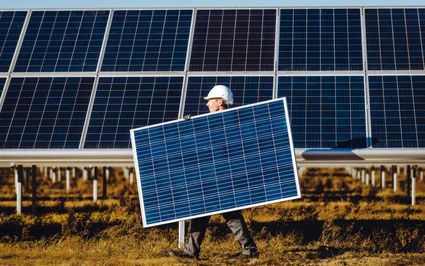Solar Asset Acquisition: Optimizing the Value of Third-Party Engineering Services During and After Construction
For Independent Power Producers (IPPs) that acquire solar assets after the development and design phases—rather than during them—there are fewer opportunities to correct design issues or engage in value engineering. However, it remains crucial to involve an Owner’s Engineer (OE) or an Independent Engineer (IE) as early as possible in the process to ensure safety, quality, and long-term operational performance.
In the first part of this two-part article, I outlined strategies for maximizing the value of third-party engineering services throughout project development and pre-construction. In this second part, I will focus on the specific engineering services that Pure Power offers to IPPs during and after construction.

**IE or OE Engaged During Construction**
The transition from pre-construction to actual construction typically occurs when the Engineer of Record releases the "Issued for Construction" (IFC) drawing set. Once the project moves into the construction phase, the primary objective of independent and owner's engineering services is to verify that what is being built aligns with the original design and specifications.
The earlier Pure Power is engaged as an Owner’s Engineer (OE) or Independent Engineer (IE), the more value we can add. It is in everyone’s best interest to begin quality assurance and control (QA/QC) checks from the very beginning of construction. Addressing a problem in the early stages—such as a “golden row†of panels—is far easier and less costly than waiting until after months of production have already taken place.

**Quality Assurance and Quality Control**
Verifying as-built conditions against the IFC drawings and project specifications is a core component of QA/QC activities. This includes visual inspections, insulation resistance tests, VLF testing, polarity and open-circuit voltage checks, and ground continuity tests. These checks are essential before system energization and commissioning.
During commissioning, all power equipment—including inverters, protection devices, transformers, and reclosers—is tested against the latest plans, energized, and operated. These tests follow manufacturer-approved standards such as NETA and IEC, including IEC 62446-1, which outlines requirements for testing, documentation, and maintenance of photovoltaic systems.
**Milestone Verification**
Major project milestones, like mechanical and substantial completion, often trigger significant progress payments. Lenders frequently engage Pure Power during construction to provide an independently verified milestone completion report. As an OE, we also offer site visits to help owners assess progress. Once milestone funds are released, the project owner or lender loses leverage to address any deficiencies or bring the project into compliance.
**Performance Validation**
As I discussed in a previous post, capacity and performance ratio tests are conducted according to established standards. When done correctly, these tests confirm that a solar asset is performing as expected. These validation tests are key to de-risking a solar asset acquisition, whether the project is newly constructed or already in operation.
**IE or OE Engaged During Post-Construction**
For IPPs focused on acquiring operational assets, a specialized form of technical due diligence is required to understand the as-built conditions. This applies not only to new systems but also to those that have been in operation for years. After construction is complete and commercial operations begin, it's just as important to validate the PVsyst model as it is to evaluate the fielded design and construction.
Ideally, the operating system should be free of defects and safety hazards. The goal is to ensure that the system functions as intended and meets all design and contractual requirements.

**As-Built Drawing Review**
As I’ve mentioned before, when record drawings do not match the actual installed system, project owners face unnecessary costs and risks. A thorough review of as-built drawings is essential during asset acquisitions. The aim is to confirm that the fielded system matches the documented one.
**Performance Analysis**
Since all revenue from a solar asset depends on the accuracy of the PVsyst model, it’s vital to verify its correctness and make necessary adjustments based on real-world performance. This is especially important when acquiring older assets, as different derate factors apply for soiling, degradation, and availability. For older systems, we can enhance performance modeling by considering environmental changes like tree growth and using updated software tools.
**Safety Evaluation**
After construction, one of the main goals of technical due diligence—such as plan reviews, QA/QC checks, and field inspections—is to ensure the solar asset is free from safety hazards. Once the asset is acquired, making changes or repairs becomes costly. For systems that have been in operation for some time, it's crucial to confirm that proper maintenance has been carried out to prevent unexpected failures due to aging equipment.
Medium Excavator,Caterpillar Excavator,Medium Size Excavator,Medium Excavator For Sale
Shandong Yineng Heavy Industry Co.,Ltd , https://www.yinengloader.com